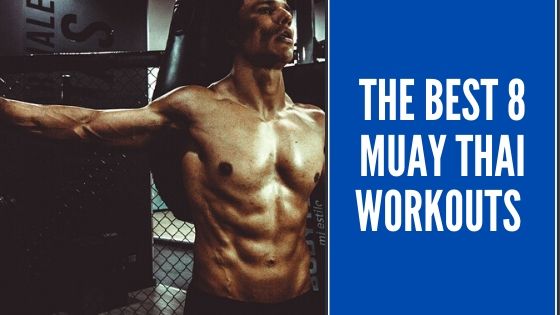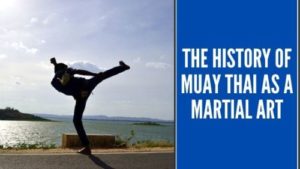Muay Thai, a discipline of the martial arts known as Thai Boxing, is a martial art that originated in Thailand in the 1920s. ‘Muay’ means ‘combat’ or ‘wrestling’ and those who practice it are known as ‘nak muay’ or, if they are Westerners, ‘nak muay farang’. One of its characteristics is that it is not only a physical discipline, but mental agility is also used a lot.
Like most martial arts, the practice of Muay Thai exercises has many benefits. The art of the eight limbs, as it is commonly known, is one of the most effective martial arts in the world, and continuous training of it can do wonders for your body.
Muay Thai is a contact sport that has developed a lot, with combined techniques of legs, arms, feet, knees, elbows, clinch or sweeps and projections. It is considered the most effective martial art, besides being one of the most used disciplines in MMA. But what does this contact sport give us?
Losing weight
One of the reasons why this sport is so important is because it is excellent to help you lose weight because it is a high-impact sport in which you use almost your entire body when you train and it will make you burn calories and lose fat, especially if you practice it constantly.
Self-defense
Muay Thai is a very good martial art to learn self defense. If you want to train for that reason, be sure to learn ways to subdue your opponent as long as the situation warrants it. In addition, Muay Thai contributes to unity, fellowship and a sense of justice.
To be more disciplined
Muay Thai has a fairly strict code of conduct, exalts all forms of friendliness and harmony and is governed by a set of rules:
- We must always try to be helpful
- To be faithful to ourselves and also to others
- Train and exercise hard, for that we give you some recommendations to train and define the body.
- Always be polite and courteous
- Carry out clean and edifying actions
- Persevere
- Do not outplay your opponent by breaking the rules
- Having a correct vocabulary and thoughts
- Showing respect for nature and its laws
In this article, you will find the best Muay Thai workouts you can start doing right now.
1) Stretch your muscles.
Stretching is important before starting any kind of physical activity. Martial arts, in this case, Muay Thai workouts require flexible muscles and joints, as it is very easy to tear or stretch a muscle if you are not careful. Spend at least 10 minutes stretching each muscle group you will use that day before moving on to any other warm-up routine.
- Try a twisting stretch of your abdomen. Lie on your stomach, keeping your hips on the floor, and then get up by stretching your arms before turning one shoulder (and then the other) to the floor.
- Stretch your hamstrings by placing one foot on the floor and the other on a table or other raised piece of furniture. Bend your knee and slowly lower your chest to your knee before switching sides.
- Another hamstring stretch is to spread your feet shoulder-width apart and bend down to the floor without bending your knees. Hold this position for 10 seconds and repeat the stretch three to five times to maximize your flexibility.
- Stretch the adductor by keeping one foot on the floor (toes pointing forward) and bending the other leg (toes pointing outward). Lower your body and stretch your groin muscles slowly before switching sides.
2) Jumping rope
Jumping is an extremely easy exercise and improves your cardio, motor skills, balance, concentration and endurance. It is an exercise that boxers have benefited from for centuries and is equally beneficial for Muay Thai workouts to contain.
3) Doing Pull-Ups
Pullups are beneficial for anyone who competes in a sport that forces them to both withstand blows and carry their own weight or manipulate the weight of others. This is an important part of Muay Thai training. Lifting weight is a big part of the sport, and having strong pectorals, shoulders and biceps is helpful.
The basic movement of a pull up actually mimics the position you would be in when hooked up with an opponent.
- To perform a pull-up, grab a bar with your hands a little wider than shoulder-width. Cross your legs so that your hands carry your full weight.
- Now, slowly pull yourself towards the bar until your chin is over it. Slowly lower yourself to the starting position. There are many other variations when it comes to mastery.
4) Pistol Squats
This squat variation is excellent as both a plyometric and an isometric exercise, helping you improve your overall core and leg strength and explosiveness. This makes pistol squats useful to consider when it comes to Muay Thai workouts.
To perform this exercise at home:
- Stand with your feet shoulder-width apart.
- Elevate a single foot off the ground, balancing with the other.
- Stretch your arms straight with your palms downward.
- Start descending with a squat while you keep your leg extended parallel to the ground.
- Keep going down until your glutes graze the calf of the leg that is resting on the ground.
- Go back up and repeat the exercise. Make sure your extended leg does not touch the ground until you have completed all your repetitions.
- Perform a set using your other leg.
5) Doing Burpees
Burpees are a great way to exercise your whole body and get a strong bloodflow. Burpees strengthen your core muscles and are a great way to build and improve your cardio.
- Stand with your feet shoulder-width apart.
- Bend over, placing your hands down on the floor as you would when doing push-ups.
- Bring your legs back and do a push-up.
- Bring your legs to a squatting position and jump as high as you can. Repeat until you are exhausted.
6) Doing Box Jumps
This is a very good alternative to build up your legs’ responsiveness and strength, which is a must in Muay Thai workouts. Jumping into the box also will improve your explosive strength, another trait that is very appreciated for kicking and legwork. Even your hip flexors do a good workout when you do box jumping.
When you do this exercise for the first time, it is best to start with a smaller box before taking on more difficult ones.
To execute a Box Jump, you have to place yourself in front of a box or similar structure that can support your body weight. Stand in front of it and do a mini squat before jumping on top of the box.
7) Perfect your fighting stance.
The fighting stance is crucial to maintaining proper balance while practicing Muay Thai. In addition, good stance will help protect you while delivering the strongest blows you can to your opponent. Flexibility is important in a good fighting stance, so make sure you have warmed up properly before starting.
- Spread your feet out to a distance between the width of your hips and shoulders, with your knees slightly bent. Keep your dominant foot slightly behind you so that you have more momentum when kicking with that foot.
- Tighten your abdominal muscles a little (but don’t overdo it). You don’t want your abs to be so tight that they restrict your breathing or movement, but you should tighten them a bit in case your opponent hits you in the stomach.
- Protect your face with the dominant hand fist, but keep it ready to attack, and put the non-dominant hand fist slightly in front of you or at the height of your nose.
- Bring your chin down towards your collarbone and keep it there. This will give you some protection against a broken nose or a black eye.
Move around and try to change the rhythm or cadence of your movements periodically. The goal is to make sure that your opponent cannot predict what your next move will be. This routine can be an interesting way to enhance your Muay Thai workouts.
8) Practice some Muay Thai techniques.
There are many Muay Thai techniques and mastering them all will take you many years. However, even a beginner may be able to incorporate some traditional techniques into their training and use them to further develop their skills.
- Kao Dode (Jumping knee), consists of jumping on one leg and then using the knee of that leg to give your opponent a direct knee strike.
- Kao Loi (flying knee), is to take a step forward, start jumping on one leg as if you were going to use the knee or foot of that leg, and then change legs in the air to throw a knee.
- Kao Tono (straight knee), consists of hitting with the knee straight and upwards, close to the opponent.
- Kao Noi (short knee), consists of using the knee, in close combat, to hit the upper thigh (but not the groin) of your opponent to exhaust him. You can also use it to block an opponent’s kick or knee.






